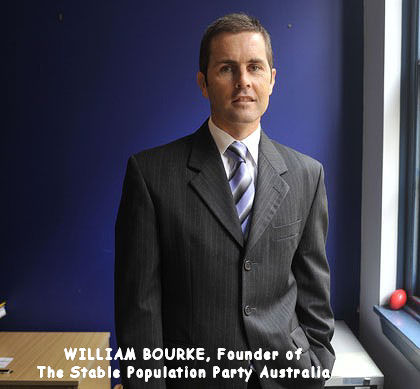23 million milestone nothing to celebrate: just a smaller slice of the national pie for everyone
 Everyone gets a smaller slice of the national cake and pays more for it. The arrival of Australia’s 23 millionth person tomorrow is no cause for celebration, according to Sustainable Population Australia (SPA).
Everyone gets a smaller slice of the national cake and pays more for it. The arrival of Australia’s 23 millionth person tomorrow is no cause for celebration, according to Sustainable Population Australia (SPA).

Academy of Science said best stop at 23 M
National President of SPA, Ms Jenny Goldie, noted that in 1994 the Australian Academy of Science had said: ‘In our view, the quality of all aspects of our children's lives will be maximized if the population of Australia by the mid-21st Century is kept to the low, stable end of the achievable range, i.e. to approximately 23 million.’[i]Ms Goldie says: “But we are not stabilising our numbers. We continue to grow at Third World rates, at 1.7% pa.”
Treasurer Ken Henry's concerns
In 2009, then Secretary of Treasury Ken Henry expressed concern about the addition of another 13 million people by mid-century. He said a ‘population expansion of this order has a host of implications for the Australian economy and society; and it raises a number of profound issues for economic policy’.
“Yet if 1.7% continues, there will be even more than Secretary Henry cited. There will be 43 million by mid-century and 100 million by 2100,” says Ms Goldie.
Ken Henry’s comments prompted the Department of Immigration and Citizenship (DIAC) to commission a study[ii] on the impact of different levels of Net Overseas Migration (NOM) on Australia’s physical natural and built environments out to 2050.
DIAC:Higher immigration causes adverse effects
The 2010 DIAC-commissioned study found, amongst many findings
· Higher levels of NOM impose greater adverse impacts on the quality of our natural and built environments (note: NOM to September 30, 2012 was 228,000 pa)
· Decreased urban water supply is a significant environmental constraint exacerbated by higher NOM
· Greenhouse gas (GHG) emissions are expected to grow to several times current levels by 2050 unless rapid mitigation activities are implemented, and will be significantly higher with higher NOM
· Urban expansion will cause the loss of horticultural production from peri-urban areas which will reduce access to high quality fresh food, especially vegetables, with Sydney being particularly vulnerable.


Recent comments